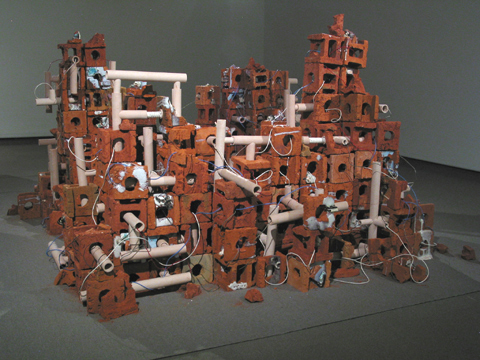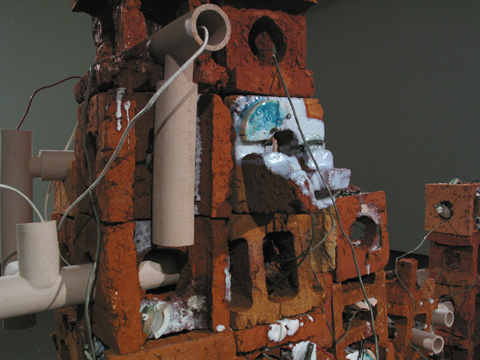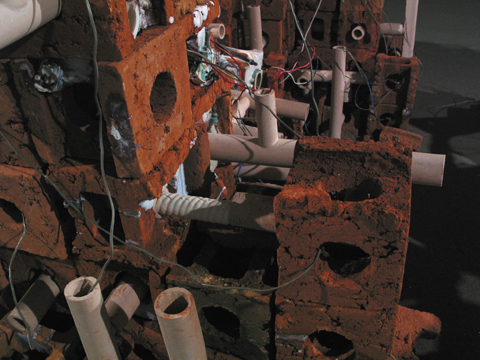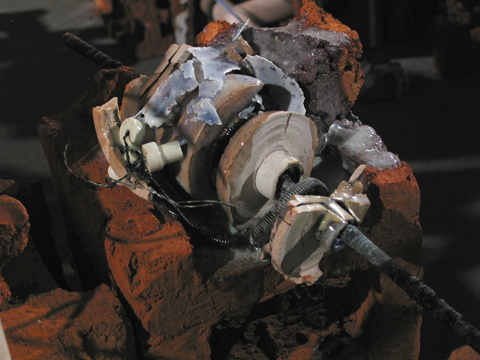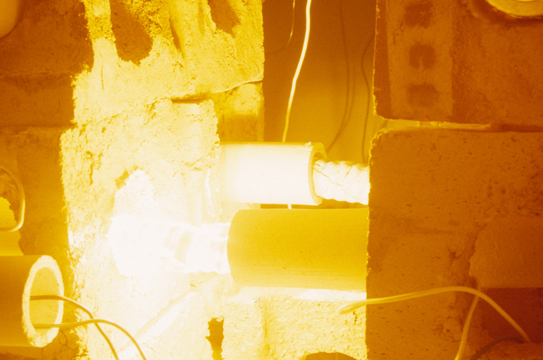Home
Gallery
Biography
CV
Contact
Rublic
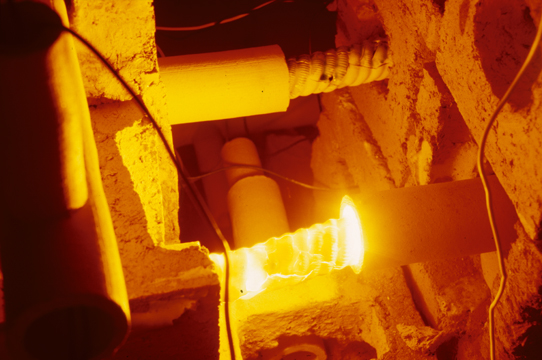
Rublic (2005-2006) was a series of similar exhibitions that happened at various galleries in Regina, Halifax and Portland. Each exhibition was an expansion on each earlier one in terms of both scale and design. The materials from each installation were reused in subsequent installations, and therefore entropy is inherent in the project - in later versions the materials were stained with glaze, worn from use and broken from transportation. The project developed a complex history which was written in this accumulated decay. The culmination was an installation that formed my MFA thesis exhibiton in December, 2006.
Rublic is made of brick, pipe and wire, with electroceramic coils scattered amongst these components. The coils are electrified during the exhibition so that they are literally fired from the inside out. Their dramatic transformation from greenware to glazeware is completely visible to the audience. They glow yellow hot, and the melting of the glaze on their surfaces can actually be seen, heard and smelled.
The coils are rudimentary figures. Their helical shape refers to the basic chromosomal structure from which the body is composed. They exist within a dilapidated architectural form constructed from a network of superimposed systems - structural, electrical, textual and biomorphic. The form functions as a microcosm for the figures, and the coils become subject to the systems which support, narrate and facilitate them. In the metaphorical language employed, the coils have a lifecycle that begins and ends with the firing in the gallery.
In its use of time and spectacle this work is theatrical, and the scene it creates is a dystopic one. The act of firing renders the coils fully realized, but at the same time uneven and rapid temperature change stresses the material, leaving it cracked, warped, slumped or melted. Symbolically, the transformation of the material from plastic, potent clay to fused, inert ceramic is of prime importance. That this is achieved through a process of potentially real (rather than represented) danger is all the more provocative.
